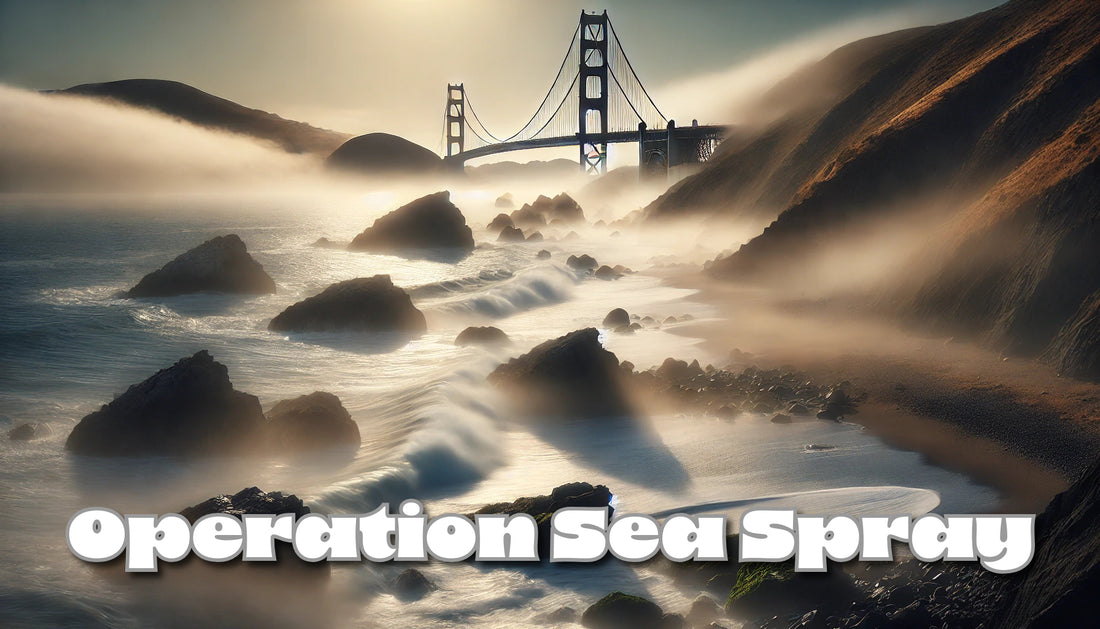Operation Sea-Spray: A Chilling Cold War Experiment
The Cold War was a time of intense scientific experimentation, driven by fear of global conflict and a desire for dominance in unconventional warfare. Among the most controversial of these experiments was Operation Sea-Spray, a 1950 U.S. military experiment that exposed unsuspecting civilians in San Francisco to biological agents.
Origins of Operation Sea-Spray
In the aftermath of World War II, the U.S. military sought to understand the potential impact of biological weapons. A key question was how such agents could disperse over urban environments. In this context, the U.S. Navy initiated Operation Sea-Spray in September 1950, under the auspices of biological warfare research conducted at Fort Detrick, Maryland.
Objectives of the Experiment
The goal of Operation Sea-Spray was to:
1. Study the dispersal patterns of biological agents over a major urban area.
2. Test the vulnerability of cities to biological warfare attacks.
3. Determine how airborne pathogens would spread through wind currents, building structures, and population density.
The operation was conducted under the assumption that the agents used would not harm the population.
The Experiment: Names, Dates, and Methods
• Date: The experiment took place over several days in September 1950.
• Location: San Francisco, California, a densely populated coastal city ideal for studying fog-borne dispersal.
• Agents Used:
• Serratia marcescens: A bacterium chosen for its red pigment, which made it easy to track.
• Bacillus globigii: Another bacterium often used in military simulations, as it mimicked the properties of anthrax.
From a Navy ship anchored off the coast, the agents were sprayed into San Francisco’s dense fog using a specially designed aerosol system. The fog was expected to carry the bacteria inland, dispersing it over the city’s population.
Impact on the Population
An estimated 800,000 residents were exposed to the bacterial agents, completely unaware of the experiment. While the bacteria were considered harmless at the time, there were unintended consequences:
• Medical Cases:
• Shortly after the experiment, 11 people were hospitalized at Stanford University Hospital with severe urinary tract infections, all caused by Serratia marcescens.
• One patient, Edward J. Nevin, died from complications, marking the first known fatality linked to the experiment.
• Long-Term Concerns: Some experts have suggested that the experiment may have caused health problems that were never directly attributed to it, including infections in vulnerable populations.
Secrecy and Revelations
Operation Sea-Spray remained classified until the 1970s, when revelations about Cold War-era experiments surfaced during Congressional hearings. Public outrage ensued, especially as it became clear that residents had not consented to being part of the experiment.
Ethical Violations and Fallout
The experiment raised serious ethical questions:
1. Lack of Informed Consent: Civilians were exposed to bacteria without their knowledge or approval.
2. Public Safety Risks: While Serratia marcescens was considered “safe,” the hospitalization and death showed that the risks were underestimated.
3. Violation of Trust: The experiment eroded public trust in the military and government institutions.
Connections to Other Experiments
Operation Sea-Spray was not an isolated incident. It was part of a broader set of biological and chemical tests conducted by the U.S. military during the Cold War, including:
• Operation Big Itch: Tests involving the dispersal of infected fleas.
• Operation Whitecoat: A series of experiments using volunteer U.S. Army personnel to study biological agents.
• Operation LAC (Large Area Coverage): Tests dispersing biological simulants over large swaths of the U.S.
Legacy and Possible Modern Parallels
Although Operation Sea-Spray officially ended, concerns remain that similar experiments could be conducted under new names. Programs aimed at biodefense, such as those run by DARPA or the Department of Homeland Security, continue to explore the potential of airborne biological agents, albeit with stricter ethical and legal guidelines.
Lessons Learned
Operation Sea-Spray highlights the importance of:
1. Transparency in Research: The public has a right to know about experiments that may affect their health.
2. Ethical Oversight: Experiments must be conducted with informed consent and clear ethical boundaries.
3. Accountability: Governments must ensure that past mistakes are not repeated under the guise of national security.

